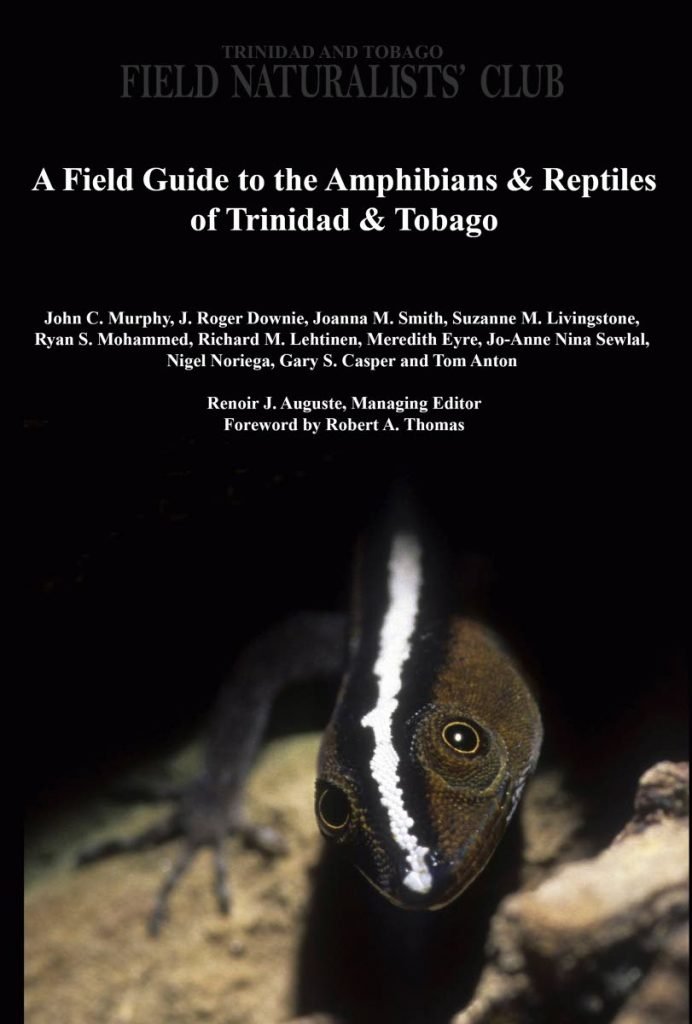Exploring TT's herpetofauna

DANIELLE MORONG
“The important thing in science is not so much to obtain new facts as to discover new ways of thinking about them.”― Sir William Bragg.
The act of discovery and the sharing of knowledge are in many ways, the heartbeat of a scientist. However, every now and again, a text comes along which can revolutionise a field, create opportunities for further research and exploration and even help stimulate a cultural shift. A Field Guide to the Amphibians and Reptiles of Trinidad & Tobago, the Trinidad and Tobago Field Naturalists’ Club (TTFNC) newest publication is one such example.
On a cool April evening, an eclectic mix of naturalists and the constantly curious gathered in Lecture Theatre B of the Frank Stockdale Building, University of the West Indies, St Augustine campus to celebrate the launch of the first ever comprehensive field guide to Trinidad and Tobago’s diverse ‘herpetofauna’. While the term might seem strange to some, it refers to the all of the reptiles (snakes, lizards, caimans, turtles and tortoises) and amphibians (frogs, and toads) in a given area or region, in this case – TT. With our warm tropical climate and unique mix of continental and island ecology, it can be of no surprise that documenting our herpetofauna was a monumental task that had been over five years in the making.
Some 16 authors spread across the US, UK Europe and TT contributed towards the creation of this book. Photographs were provided from numerous sources, a fact which lead author and US-based herpetologist John C. Murphy mentioned in his live video feature address. Such a collaborative effort and the detailed output which it produced, has the possibility of ‘stimulating more research into herpetology of the islands’. It affords naturalists and researchers alike the opportunity to put knowledge into action by learning more about species which can now be much more easily identified. However, it is not limited to use only by the herps at heart. A deeper understanding of the life histories and habitats of different species can allow for more informed decision-making, especially when it comes to land use planning. The simple act of trimming the vegetation along a stream’s edge can completely decimate the preferred habitat for a vulnerable species such as the Tobago glass frog (Hyalinobatrachium orientale tobagoense), which lays its eggs on the underside of streamside vegetation.
While impossible to showcase all our herpetofauna in one evening, TTFNC president and managing editor of the publication, Renoir Auguste was able to highlight several species in a vivid slideshow display. For some, the collection of bottled specimens of frogs and snakes and the skeletal remains of sea turtles was their closest encounter with herpetofauna. This can be of little surprise as for many people, a cultural dislike and phobia towards frogs and snakes in particular has been ingrained through custom and religion. This was captured by local contributor Ryan S Mohammed’s recollection of his own experiences. Ryan’s early childhood fear of amphibians and reptiles is perhaps one which many in TT can identify with.
For the layperson, the Field Guide to the Amphibians and Reptiles of Trinidad and Tobago remains an easy to use instrument to satisfy a gurgling curiosity about an aspect of our local wildlife. For others, it can be used as an educational tool to stifle old fears. This guide coupled with online platforms such as iNaturalist can also be used to enhance community identification and verification of species as well as stimulate further research, as expounded upon by UWIZM curator Mike G. Rutherford.
As local contributor Dr Jo-Anne Sewlal elaborated, it is the collective hope of all involved in its publication that this field guide will not be viewed “as another book”, but that it would instead spark a change in thinking about our amphibians, reptiles and the wider natural environment.
For more information on our natural environment, contact the Trinidad and Tobago Field Naturalists’ Club at admin@ttfnc.org or visit our website at www.ttfnc.org and our Facebook or YouTube pages.


Comments
"Exploring TT's herpetofauna"